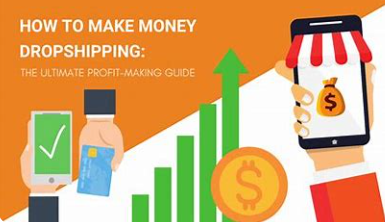How to earn money online in this you will get full guide how to earn money online In this article we will tell you how you can earn money online, ways to earn money online, first is blogging, second is YouTube, third is dropshipping in this you can earn money online up to 1 lakh and more but you have to give time to it you have to wait up to 4 to 5 months to earn money online with it
Earning money from blogging can be a rewarding , but it requires strategic planning, consistent effort, and patience. Here’s a comprehensive guide to help you get started there are two ways to start first is free using blogger (by google) and other is by paying for hosting and domain using this you can earn money online
Table of Contents
Blogging ( earn money online )

1. Choose a Niche
Identify Your Passion and Expertise:
- Select a niche that you are passionate about and have knowledge in. This could be anything from travel, technology, health, and fitness to personal finance, lifestyle, or food.
Market Research:
- Analyze the market to understand the demand for content in your chosen niche.
- Identify your target audience and what kind of content they are looking for.
2. Set Up Your Blog
Choose a Blogging Platform:
- Popular options include WordPress.org (self-hosted), WordPress.com, Blogger, and Wix. WordPress.org is highly recommended for its flexibility and control.
Select a Domain Name and Hosting:
- Choose a domain name that is easy to remember and relevant to your niche.
- Use reliable hosting services like Bluehost, SiteGround, or HostGator.
Design Your Blog:
- Use a professional, responsive theme.
- Ensure your blog is user-friendly, with easy navigation and a clean layout.
3. Create Quality Content
Content Strategy:
- Plan your content around topics that are relevant and valuable to your audience.
- Maintain a content calendar to schedule posts regularly.
SEO Optimization:
- Conduct keyword research using tools like Google Keyword Planner, Ahrefs, or SEMrush.
- Optimize your posts for search engines by using relevant keywords, meta descriptions, and internal linking.
Engaging Content:
- Write high-quality, original content.
- Use multimedia (images, videos, infographics) to make your posts more engaging.
4. Build an Audience
Social Media Promotion:
- Share your blog posts on social media platforms like Facebook, Twitter, Instagram, and LinkedIn.
- Engage with your audience through comments, shares, and likes.
Email Marketing:
- Build an email list using tools like Mailchimp, ConvertKit, or AWeber.
- Offer a freebie (eBook, checklist) to encourage sign-ups.
- Send regular newsletters with updates and exclusive content.
Networking:
- Collaborate with other bloggers in your niche.
- Guest post on popular blogs to reach a wider audience.
5. Monetize Your Blog
Affiliate Marketing:
- Join affiliate programs related to your niche, such as Amazon Associates, ShareASale, or Commission Junction.
- Promote affiliate products within your blog posts and earn commissions on sales generated through your referral links.
Advertising:
- Use Google AdSense or other ad networks to display ads on your blog.
- Sell direct ad space to companies in your niche.
Sponsored Posts:
- Partner with brands to create sponsored content.
- Ensure the sponsored content aligns with your audience’s interests and is clearly disclosed.
Selling Products or Services:
- Create and sell digital products like eBooks, online courses, or printables.
- Offer services such as consulting, coaching, or freelance writing.
Membership or Subscription Model:
- Offer premium content through a membership or subscription model using platforms like Patreon or MemberPress.
6. Analyze and Optimize
Track Performance:
- Use Google Analytics to monitor your blog’s traffic, user behavior, and conversions.
- Identify which content performs best and resonates most with your audience.
Continuous Improvement:
- Update old posts with fresh information and SEO enhancements.
- Experiment with different types of content and monetization strategies to see what works best.
7. Legal and Ethical Considerations
Disclosures:
- Clearly disclose affiliate links and sponsored content to comply with FTC regulations.
Privacy Policy:
- Have a privacy policy in place to inform visitors how their data is collected and used.
Copyrights:
- Respect copyright laws by using properly licensed images and content.
8. Stay Consistent and Patient
Consistency:
- Stick to your content calendar and publish regularly.
- Engage with your audience consistently through social media and email.
Patience:
- Building a successful blog takes time. Don’t get discouraged by slow growth initially.
- Focus on providing value and building trust with your audience.
- for eg : visit taazakabar.in
By following these steps and maintaining dedication, you can start an blogging and earn money online by following this steps and you have another choice given blove
Youtube (earn money online )

Starting a YouTube channel can be an exciting and rewarding venture. Here’s a comprehensive guide to help you get started:
Step 1: Planning Your Channel
- Define Your Niche:
- Choose a specific topic or area of interest.
- Ensure it’s something you’re passionate about and knowledgeable in.
- Research Your Audience:
- Identify your target audience.
- Understand their interests and what type of content they engage with.
- Analyze Competitors:
- Study successful channels in your niche.
- Note what works for them and think about how you can differentiate your content.
Step 2: Setting Up Your Channel
- Create a Google Account:
- You need a Google account to create a YouTube channel.
- Create Your YouTube Channel:
- Go to YouTube and sign in.
- Click on your profile picture and select “Create a channel.”
- Choose a name that reflects your brand or content.
- Customize Your Channel:
- Add a channel description that clearly explains what viewers can expect.
- Upload a profile picture and banner image that represent your brand.
- Set up links to your social media and website if applicable.
Step 3: Content Creation
- Plan Your Content:
- Create a content calendar.
- Decide on a posting schedule (e.g., weekly, bi-weekly).
- Invest in Equipment:
- Camera: A good quality camera or even a smartphone with a good camera.
- Microphone: Clear audio is crucial; invest in a decent microphone.
- Lighting: Proper lighting can significantly enhance video quality.
- Software for Editing:
- Choose video editing software that suits your needs (e.g., Adobe Premiere Pro, Final Cut Pro, or free options like DaVinci Resolve or iMovie).
Step 4: Creating and Uploading Videos
- Scripting and Storyboarding:
- Plan your video content, including scripts and storyboards if necessary.
- Make sure your videos have a clear structure.
- Filming:
- Ensure good lighting and sound quality.
- Be aware of your background and ensure it’s not distracting.
- Editing:
- Edit your videos to be engaging and concise.
- Add intros, outros, and any necessary graphics or music.
- SEO and Metadata:
- Write a compelling title and description.
- Use relevant keywords and tags.
- Create an engaging thumbnail.
Step 5: Publishing and Promotion
- Upload Your Video:
- Click on the camera icon with a “+” and select “Upload video.”
- Follow the prompts to upload your video.
- Promote Your Video:
- Share on social media platforms.
- Engage with your community and respond to comments.
- Collaborate with other YouTubers in your niche.
- Analyze Performance:
- Use YouTube Analytics to track your video’s performance.
- Pay attention to metrics like watch time, audience retention, and engagement.
Step 6: Growing Your Channel
- Engage with Your Audience:
- Respond to comments and engage with viewers.
- Ask for feedback and suggestions.
- Consistency:
- Stick to your posting schedule.
- Regular uploads help retain and grow your audience.
- Optimize Your Content:
- Continuously improve based on analytics and feedback.
- Experiment with different types of content and formats.
- Monetization:
- Once you meet the eligibility requirements (1,000 subscribers and 4,000 watch hours in the past 12 months), apply for the YouTube Partner Program to start monetizing your videos.
Additional Tips:
- Stay Updated: YouTube algorithms and trends change frequently. Stay updated with the latest trends and updates.
- Be Authentic: Authenticity builds trust with your audience.
- Learn and Adapt: Continuously learn new skills and adapt to changes.
By following these steps, you’ll be well on your way to creating a successful YouTube channel. Good luck!
Dropshipping

Step-by-Step Guide to Starting a Dropshipping Business
1. Choose a Niche
- Research Market Trends: Use tools like Google Trends, Amazon Best Sellers, and niche-specific forums to identify popular and profitable niches.
- Assess Competition: Check out competitors in your chosen niche. High competition can indicate a profitable market, but you’ll need to find ways to differentiate your store.
- Evaluate Profitability: Ensure that the products in your niche have good profit margins. Consider the cost of goods, shipping fees, and marketing expenses.
2. Find Reliable Suppliers
- Use Dropshipping Directories: Platforms like AliExpress, Oberlo, and SaleHoo list thousands of suppliers. Evaluate their ratings, reviews, and product range.
- Order Samples: Before committing, order samples to check the quality, shipping time, and supplier reliability.
- Negotiate Terms: Discuss minimum order quantities, pricing, and return policies to ensure favorable terms.
3. Set Up Your Online Store
- Choose an E-commerce Platform: Shopify, WooCommerce (WordPress), and BigCommerce are popular choices for dropshipping businesses.
- Design Your Store: Select a theme that fits your brand and customize it. Ensure your store is user-friendly, mobile-responsive, and visually appealing.
- Add Products: Import product listings from your suppliers. Write compelling product descriptions and use high-quality images.
4. Implement Payment Gateways
- Select Payment Methods: Offer multiple payment options like credit cards, PayPal, and other local payment methods to cater to a broader audience.
- Secure Transactions: Ensure your payment process is secure with SSL certificates and PCI compliance.
5. Market Your Store
- Social Media Marketing: Create profiles on platforms like Facebook, Instagram, and Pinterest. Share engaging content and run targeted ads.
- Search Engine Optimization (SEO): Optimize your store and product pages for relevant keywords to improve organic search rankings.
- Email Marketing: Build an email list and send regular newsletters, promotions, and updates to keep customers engaged.
- Influencer Partnerships: Collaborate with influencers in your niche to reach a wider audience and build credibility.
6. Manage Orders and Customer Service
- Order Fulfillment: When a customer places an order, purchase the product from your supplier, who then ships it directly to the customer.
- Customer Support: Provide excellent customer service. Address inquiries promptly and handle returns and refunds smoothly.
- Track Performance: Use analytics tools to monitor sales, website traffic, and customer behavior. Adjust your strategies based on the data.
7. Scale Your Business
- Expand Product Range: Gradually introduce new products to your store based on customer feedback and market demand.
- Automate Processes: Use tools like inventory management software and automated marketing campaigns to streamline operations.
- Optimize Advertising: Continuously refine your marketing strategies for better ROI. Test different ad creatives, targeting options, and marketing channels.
Additional Tips
Build a Brand : Focus on creating a strong brand identity to stand out from competitors.
Stay Informed: Keep up with industry trends and continuously improve your business strategies.
Manage Finances: Keep track of your expenses and profits to ensure your business remains profitable.
By following these steps and continuously refining your approach, you can build a successful dropshipping business.
also read : Amit Shah Claims Arvind Kejriwal’s Campaign Remark is ‘Clear 1 Contempt of Supreme Court’ Right Now
Audi A3 2024 : new model launching on 15 may at just 35 lakh only
Prime Minister Modi’s 1st Vision for India The Bhartiya Janata Party (BJP) planning
⟵Best top model car under 20 lakh 2024 in india merket
How to earn money online ?
you can earn money online from blogging , youtube & dropshipping this are some option to earn money online for get more update you can visit in indiakabar.com



